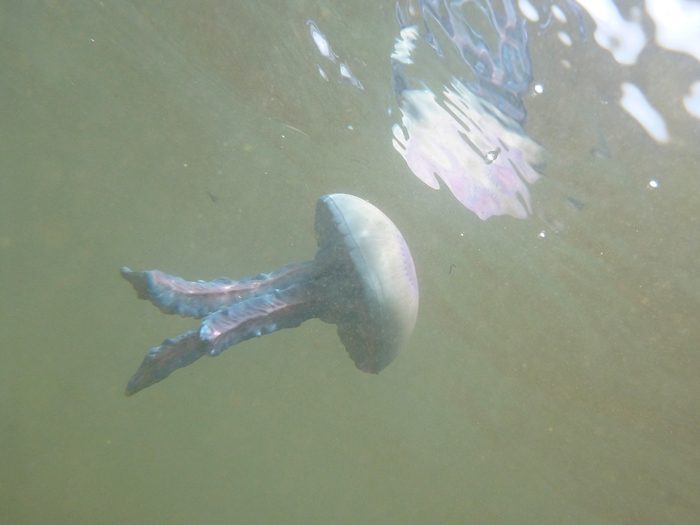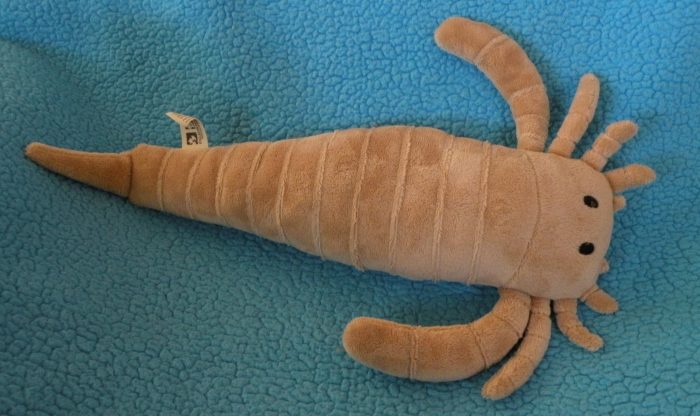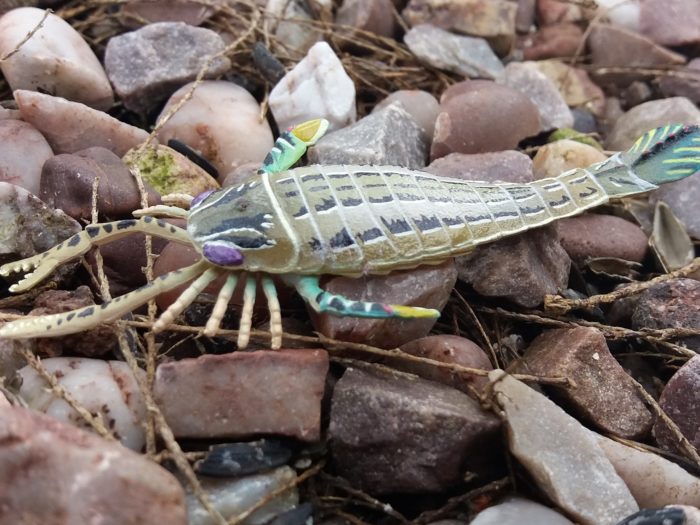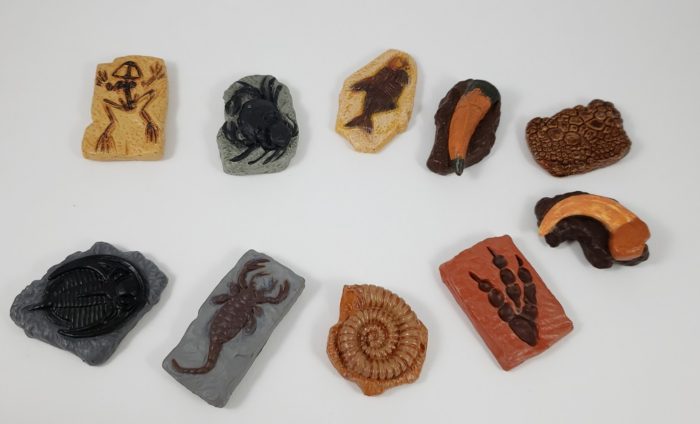Kaiyodo has to be one of the best prehistoric animal lines out there. At a small size, they gave us a wide spread of species from across earth history in glorious detail and beautiful paint schemes. Today’s review shows just this: Pterygotus, a Silurian Sea Scorpion, one of the largest arthropods ever known, reaching a body length of 5.7 ft.
Age: Silurian
Review: Ancient Fossils (Toob by Safari Ltd)
Review: Medusa (Bullyland)

4.6 (12 votes)
Summer melts us here since weeks, so time for another wet review….
Today I want you to introduce you to one of those creatures everybody knows, but knows almost nothing about, a jellyfish. Jellyfish are a very very old group of animals, they date back to the famous Ediacarian, more than 600 mya.
Review: Trilobite (Bullyland)
Review: Eurypterid (Eurypterus remipes) (Paleozoic Pals)

5 (6 votes)
Eurypterids, popularly known as “sea scorpions” are among the more charismatic of extinct invertebrates, and rightly so. Although they weren’t true scorpions these aquatic arthropods were an extremely successful group of predators that dominated both fresh and saltwater environments between 470–252 million years ago.
Review: Encyclopedia of the Paleozoic (Kaiyodo Capsule Q Museum)

4.7 (12 votes)
Review and photos by Tim Sosa, edited by Suspsy
The interval of Earth’s history which shows fossil evidence of animals is known as the Phanerozoic Eon (literally “visible animals”). The Phanerozoic is divided into three Eras. We live in the Cenozoic, which was preceded by the Mesozoic (during which dinosaurs were the largest terrestrial animals).
The interval of Earth’s history which shows fossil evidence of animals is known as the Phanerozoic Eon (literally “visible animals”). The Phanerozoic is divided into three Eras. We live in the Cenozoic, which was preceded by the Mesozoic (during which dinosaurs were the largest terrestrial animals).






